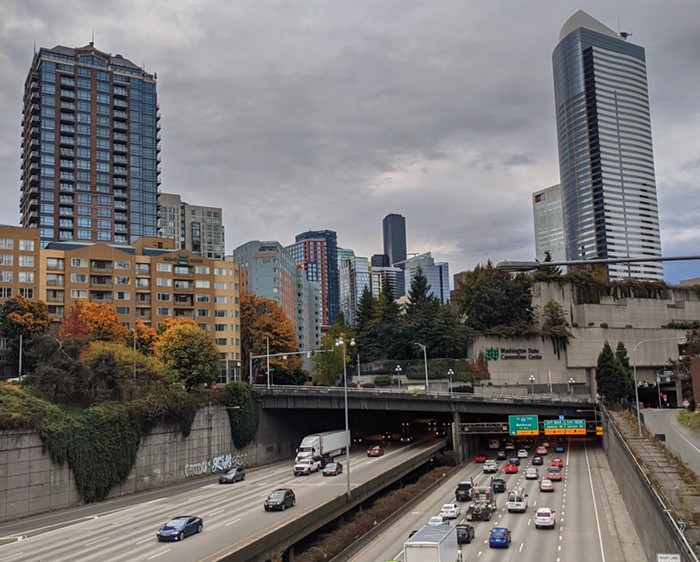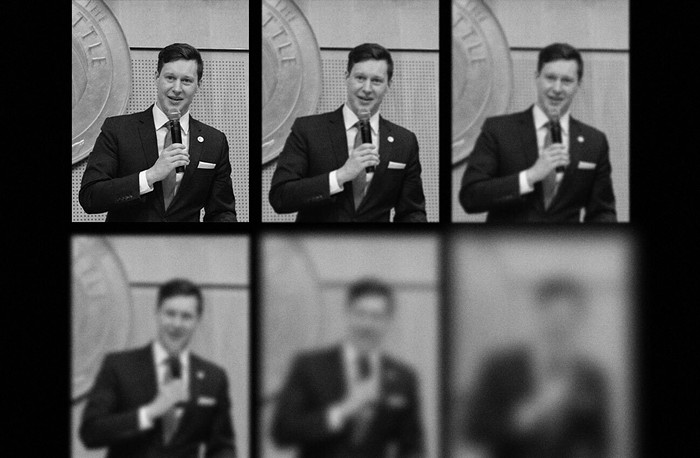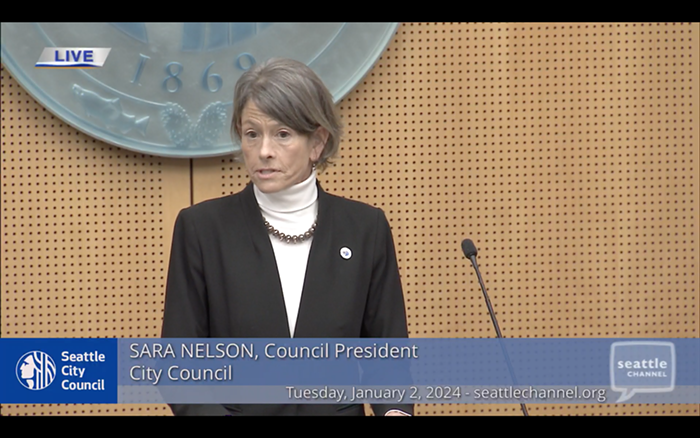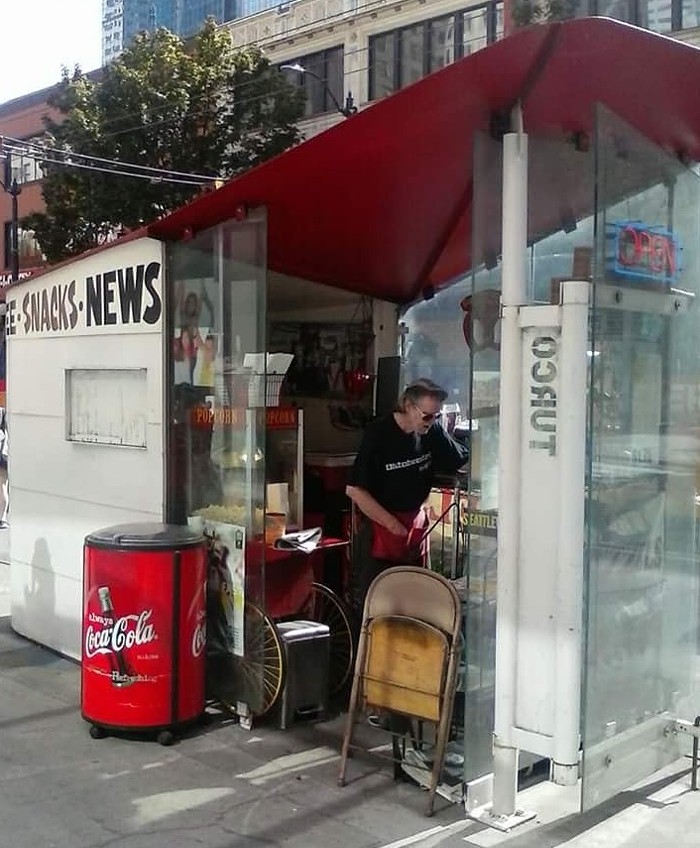
As the weather warms, and as state and local leaders stress that outdoor exercise is still encouraged during this time of social distancing, Seattle Mayor Jenny Durkan is still pondering whether some of this city's emptier streets should be given over to human-powered movement in order to alleviate persistent crowding on sidewalks and trails.
For weeks, bike and pedestrian advocates have been offering suggestions for how best to do this. In response, Durkan's office has said she's "looking into" the ideas.
Now one group, Seattle Neighborhood Greenways, is outlining a plan for taking on "dangerous crowding on our sidewalks, trails, and in our parks." It includes:
• "Closing streets through parks to cars and opening them to people walking, biking, skating, rolling, etc" (the group says this could be done in Volunteer, Interlaken, Frink, and Coleman parks)
• Allowing walking on Seattle's 2,400 miles of non-arterial streets
• Closing some major roadways to cars altogether while, on some other streets, using traffic cones to "temporarily" expand sidewalks into car lanes
Kamaria Hightower, a spokesperson for Mayor Durkan, said that right now "the health and safety of the public and our workers are the top priority," and that closing Seattle streets to create more space for outdoor recreation is under ongoing consideration.
But, Hightower added, "While we've seen some cities close streets in recent weeks, we know they have also witnessed some challenges due to crowds and staffing capacity constraints. That’s something she’s trying to balance before making any decisions."
Hightower has not yet responded to a request for more information on the specific troubles Durkan's office has noticed in other cities.
Nationally, calls to repurpose roadways are continuing, with one "die hard urbanist" today cataloguing street takeovers from Park Avenue to Dublin and noting:
Staying six feet apart to meet social-distancing guidelines is nearly impossible on most sidewalks, which are typically only four feet wide. So some cities are warming up to the idea that they could temporarily close traffic lanes to accommodate pedestrians — a fix that requires only some road cones or other cheap, easily obtainable barriers.
Over at the Seattle Bike Blog, Tom Fucoloro has also offered a number of ideas for expanding Seattle's spaces for socially-distanced outdoor activity, including:
• "Why not make every day Bicycle Sunday on Lake Washington Boulevard? We have been holding Bicycle Sunday for more than half a century, so people know the drill. And this would help solve the problem of overcrowding at Seward Park and on trails in the area, which are simply not wide enough to give at least six feet from other users."
• Closing a Capitol Hill street near Cal Anderson Park to give people using that park more room
• Letting bikers use the I-5 express lanes, which aren't really needed at the moment. ("We know it can work because Cascade Bicycle Club has hosted their Emerald City Ride on the Express Lanes for years.")
"Honestly," Fucoloro wrote in an e-mail, "my favorite practical idea is to repurpose the city's existing Play Streets program, which allows neighbors to apply for free permits to shut down sections of residential streets for a few hours. In normal times, it lets neighbors hold block parties and give kids more space to play. In this time, it could give neighbors more space to stretch their legs without crowding sidewalks. And neighbors do nearly all the work. The city just approves permits and drops off some signs. Neighbors are responsible for putting up and taking down the signs. And really, this is probably a good idea even after the restrictions are lifted."



















